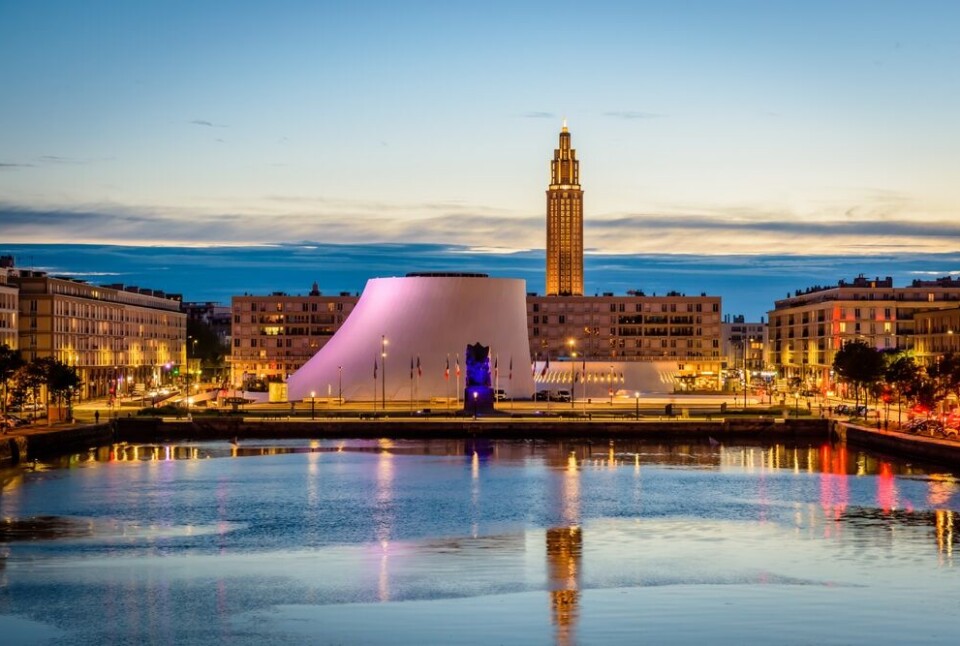-
Black history in Paris: the story behind Maison Noire Américaine
An American non-profit is illuminating the legacy and vibrant presence of African-Americans and the African diaspora in France
-
Eating alone at work in France: are attitudes changing?
Why the social taboo is being reconsidered in the modern workplace
-
French teenager wins top wildlife photography awards for Alpine ibex photos
The Connexion talks to award-winning wildlife 14-year-old photographer Lubin Godin about his process and future plans
Architecture of France: Le Havre
From bombed-out ruins to a Unesco World Heritage site

Many cities in France had to be rebuilt after severe bombing during WW2.
The results were often far from interesting: drab and built in concrete.
However, one of them, Le Havre, has been classified by Unesco as a World Heritage site for its unity and integrity.
Unesco praised it as “an outstanding post-war example of urban planning and architecture based on the unity of method-ology and the use of prefabrication, the systematic utilisation of a modular grid, and the innovative exploitation of the potential of concrete”.
Its design combines elements from the historic town plan together with new ideas of planning and construction technology.
In 1944, Le Havre was one of the most damaged towns in Europe.
The fighting that followed the D-Day landings on June 6, 1944, lasted 12 weeks and Le Havre was the last town to be liberated on September 12, but only after 11,000 bombs had fallen, killing 5,000 people, destroying 10,000 buildings and devastating 150 hectares.
A total of 80,000 people found themselves without a home or anything that resembled their town.
The whole country was profoundly shocked and the government decided to make a symbol of Le Havre to show what France was capable of. On October 7, General de Gaulle visited, declaring: “To Le Havre injured for the sake of France, but alive! And which will be great!”
One of the 20th century’s greatest architects was asked to create the new city.
Auguste Perret (1874-1954) had already made his mark in Paris and was famous for the art deco Théatre des Champs-Elysées.
He was known for using concrete in imaginative ways so that buildings were functional, while preserving classical harmony, symmetry and proportions.
He decorated, coloured, treated and dressed the concrete using different techniques, such as chipping and polishing, as well as altering the mix of components, using different proportions of sand, cement and gravel, varying the colours of the façades.
Le Havre was rebuilt between 1945 and 1964 and became one of the most modern cities in France.
Laurence Le Cieux, who is in charge of the city’s heritage, said: “His buildings were modular, with similar proportions repeated throughout.
That creates harmony, yet there is variety in the detail, with different decorations in relief, addition of columns and different colours. It is never boring and always stylish.
The concrete captures the natural light, giving variations of colour from pinky beige to bronze.
“Concrete has a bad name now but it saved the town. It was faster than stone or bricks to build with.”
St Joseph’s church is seen as one of his greatest works, with a 110m tower (pictured left).
It can be seen from out at sea and is reminiscent of both a lighthouse and, some have said, the New York skyline, making it a welcome sight for ships arriving at the port from the other side of the Atlantic.
“It is his masterpiece, with its 6,500 stained glass windows”, said Mrs Le Cieux. “Even if you are not a believer, you cannot help but feel the sense of spirituality which emanates from the building.”
L’Avenue Foch, which connects the seafront and the town centre was influenced by the Champs-Elysées. Many of Perret’s buildings were state-of-the-art blocks of flats to rehouse the population, who had been housed in camps.
The inhabitants found themselves with ultra-modern flats, with running water and bathrooms they might not have had before.
They were built so they always had windows with at least two different aspects.
The sun could move across the apartments, making them as light as possible.
The city has had its Unesco classification since 2005 and strives to make sure it continues to deserve it.
Several architects have contributed to Le Havre since Perret and Mrs Le Cieux said: “To keep the sense of harmony, shopfronts are all similar in aspect. The seafront has been developed so there is a long promenade, where families like to walk, and there is an aquatic garden, playgrounds, relaxation areas and a skate park.
























